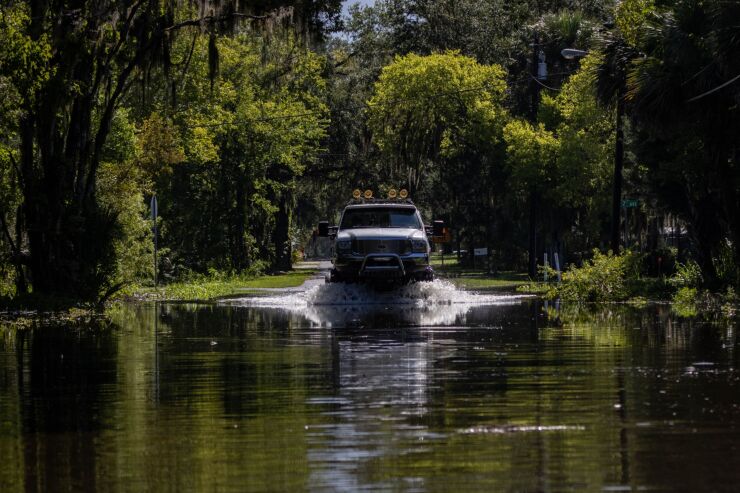The conflict between insurers and regulators that was in the spotlight after recent

Climate disaster losses are escalating in cost, and insurers have become more aggressive in efforts to contain costs and exposures, according to Robert Arnold, managing director at Charles Taylor, a claims solutions advisory firm.
State insurance regulators limiting rate increases drives carriers to raise deductibles, as well as
"When [regulators] limit the amount of increase that they can have, or what they can do, it's forcing the insurers to put larger deductibles to offset it," he said. "Huge catastrophe deductibles, wind or hail deductibles, wildfire deductibles – all these things are getting put into the policy that limit the amount of exposure for the insurance company, but it also adversely affects the policyholder too. They have to have a huge amount of damage in order to recoup any funds to put themselves back together."
If insurers can't get a higher rate, Arnold said, "they're trying to underwrite it so that they don't get the big exposure there. That leaves the policyholder in the middle. They're paying an increased rate for less coverage, and it really puts them into a bad situation."
Accessing information about climate disaster risks is more difficult for insurance consumers than it is for insurers, as

"I'm a little baffled by why we are putting this all on consumers, when it's very difficult for consumers to have an understanding of what their wildfire risk is if they've never experienced a wildfire in their lives. But the insurance companies do it as their business," he said. "Regulators and insurers are in a far better position to actually identify the risks and take the steps to mitigate the risks and partner with consumers to actually address that."
With hurricanes, for instance, major carriers have more than 40 years of historical data to draw on to determine risk, stated Marlene Dailey, a senior analyst at RSM US LLP. However, because wildfires have become more extreme, there isn't as much historical data to predict risk, she said, "making it more challenging when it comes to trying to price or assess risk from an underwriting perspective."

In Florida, private home insurers have folded or stopped offering coverage, leaving that burden to the state-sponsored
Citizens has to assess whether it has enough funds in reserve, and special assessments could be a possibility, according to Dailey.
Another possibility, particularly for floods that can result from hurricanes, may be parametric insurance. Hiscox recently partnered with FloodFlash, a parametric flood insurance provider, to underwrite catastrophe coverage.
There are flood risk models available in the market, according to Tom King, alternative risk line underwriter at Hiscox. Using available models and data points, some from the U.S. federal National Flood Insurance Program, makes it possible to accurately determine the risk and exposure.

Certain insurtech platforms that can be used, or are being used to determine that an insurer should cease coverage in a market, could also be used to pinpoint areas that might not otherwise get coverage, and then provide coverage, as
"Instead of completely pulling out of California or completely pulling out of Florida, they can just make sure that they're distributed in their portfolio accumulation, so there's not too much risk in one area," Marr said. "That would allow commercial businesses and homeowners to still get property coverage and protect the financial performance of the carriers who are insuring those risks."






